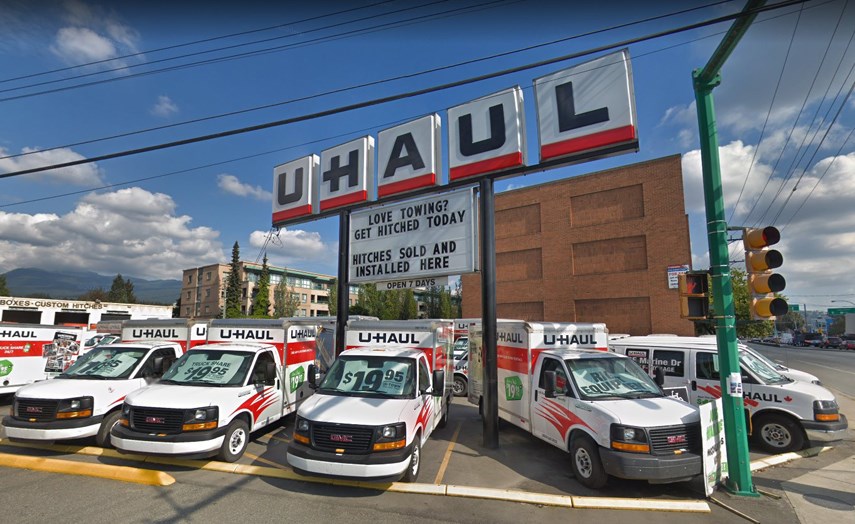Greater Sudbury is the No. 3 “growth city” in Canada, according to U-Haul’s latest round of data analysis of customer moves for 2021.
The use of one-way U-Haul trucks increased by 35 per cent year over year, while departures increased by 32 per cent.
Further, arriving customers accounted for 54.3 per cent of one-way U-Haul truck traffic in Greater Sudbury in 2021, compared to 45.7 per cent of departures.
Greater Sudbury falls behind North Bay and Belleville, with this year’s ranking also finding the city jump up from last year’s ranking of six.
Although this analysis is both specific to U-Haul and far from scientific, city director of economic development Meredith Armstrong said it aligns with what her department has seen.
“Businesses all across the city are looking for staff, and that’s everything from skilled trade to service industry stuff,” she said. “There are help wanted signs everywhere.”
Although restaurants have had a tough go of things lately, particularly since Wednesday’s rollback in COVID-related restrictions laying waste to in-restaurant dining until at least Jan. 17, they’re still hiring for positions such as line cooks.
“Anecdotally, we know there are lots of people moving to Sudbury for the first time or moving back to Sudbury given the opportunity to work from home,” Armstrong said.
Anecdotal evidence aside, the unemployment rate was 6.2 per cent in November, which was a 0.7 per cent decrease compared to the previous month. The provincial unemployment rate was 6.9 per cent and the national unemployment rate was 6.5 per cent.
There were 84,100 employed people in Greater Sudbury in November, which is an increase of almost 1,000 from the previous month. While Armstrong said it’s difficult to draw much from month over month changes, this is part of a steady increase over the past five months.
“That’s where we see a positive indicator,” she said.
“Sudbury was in a very good place just before the pandemic, and we continue to show real resiliency and strength in our numbers even during the pandemic, so we’re feeling pretty optimistic about our position as we contemplate life after COVID and getting toward more recovery.”
How, exactly, this has affected population numbers in Greater Sudbury will be determined in February when Statistics Canada releases their latest census population count.
Although Greater Sudbury is doing well given the trying circumstances that have accompanied the global COVID-19 pandemic, things aren’t quite as shiny as they might have otherwise been.
Just before the pandemic hit, approximately 85,000 people were recorded as being employed in Greater Sudbury, which is 900 greater than the latest estimate.
The latest information from Statistics Canada’s business count data provided through Workforce Planning for Sudbury & Manitoulin shows that there were 238 fewer businesses in Greater Sudbury in June 2021 than in June 2019.
The horizon looks brighter for Greater Sudbury, Armstrong said.
The Côté Gold Mine project approximately 200 kilometres north of Sudbury currently under construction is expected to require 1,000 staff.
“We know that 1,000 people will bring a higher number of folks into the community,” she said.
Meanwhile, the real estate market remains a hot sellers’ market, though still much cheaper than the Greater Toronto Area and Ottawa. As such, the city has been marketing Greater Sudbury as an affordable alternative, including those who can work remotely from anywhere.
As Armstrong clarified when interviewed in November upon being promoted to her current role, the economic development department’s chief concern moving forward will be economic recovery from the COVID-19 pandemic.
On the immediate horizon will be the Downtown Business Incubator taking shape next year and the third year of the Rural and Northern Immigration Pilot Program’s rollout.
As with the global economic challenges of 2008, which Armstrong said Greater Sudbury weathered better than many other areas, she anticipates the same coming out of the pandemic.
“Sudbury’s economy weathers storms in a different way than average economies,” she said, crediting this is at least in part due to the mining supply and service sector.
“These are commodities that are needed, the supply chains are very strong, we have a wonderful sector that’s worked very hard to expand their export market to places all around the globe to keep them buoyant.”
Tyler Clarke covers city hall and political affairs for Sudbury.com.
